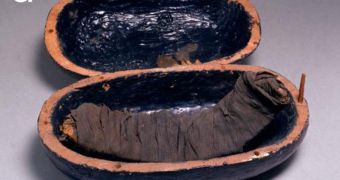A team of researchers from Egypt and the United Kingdom was recently able to figure out how the people of ancient Egypt cured the meat cuts that were interred in pyramids alongside dead pharaohs.
It is well known that Egyptians were convinced, thousands of years ago, that there is life after death. A huge social scaffold was built around this. When a pharaoh died, they were buried with a wide range of objects that they had owned in life, including weapons, spices and slaves.
When the tomb of famous pharaoh Tutankhamen was discovered, scientists found a number of 48 containers with poultry and beef cuts and joints. The meat was stored in carved wooden cases, and was meant to nourish the dead sovereign in the afterlife.
But the finding raised a number of questions. For starters, how come this meat was able to endure since 1323 BC, when Tutankhamen was entombed? In the days before refrigeration was available, fresh meat only endured in the Egyptian sun for a few hours before spoiling, NPR reports.
Researchers at the University of Bristol and the American University in Cairo, Egypt, conducted the new study to determine the methods ancient embalmers used to preserve the meat for millennia. They set out from the fact that the bodies of pharaohs were treated with special ointments and chemicals.
The research, led by UB Organic Chemistry Unit experts Richard P. Eversheda and Katherine A. Clark, and AUC Department of Egyptology professor Salima Ikramb, used latest-generation methods to determine how the meat was treated, and came across some interesting conclusions.
Some of the meat mummies appear to have been treated by rubbing them with salt. Another sample the researchers tested revealed traces of pistacia resin, which is the tree sap of the pistachio tree. Others still appear to have been covered or rubbed with fat, oils, and even beeswax.
After treatment, the meat was bandaged in cloths, and placed inside tightly-sealed sarcophagi, which did not allow any air to enter the container. This is the same technique used to preserve the bodies of pharaohs. Given the dry heat of Egypt, the meat was able to endure for millennia without going bad.
Additional details of the new investigation were published in the November 18 advanced online issue of the esteemed scientific journal Proceedings of the National Academy of Sciences (PNAS).

 14 DAY TRIAL //
14 DAY TRIAL //